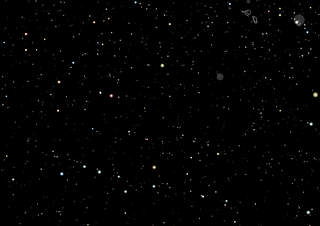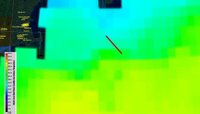
Monday, October 13, 2008
Happy Columbus Day
Back to Columbus Day, though. Since that's probably what your all talking about at home. In honor of Columbus Day, I thought I would try something interesting.
I made a replica of the instrument Columbus used to navigate his ship. It is called a Quadrant. Columbus would sight the North Star with his quadrant and measure its angle above the horizon. That angle is equal to your latitude. He used a quadrant to measure that angle.
This is what a quadrant looks like. You hold it up so you can see the star you want in your site. The weighted rope simply falls over the scale of numbers and indicates the angle. What instrument in math looks like this? Post your answers on the blog if you think you know.
So did I beat the GPS? You will have to watch this video to find out.

Want to try sighting the North Star yourself? Here is how: Find the Big Dipper. Trace an imaginary line from the spoon up. The first bright star you come to is the North Star.
Want to find our more about using the stars to find your way, or Celestial Navigation, click here.
The nets on the Bigelow have 6 sensors, each reporting different variables, such as depth, the width of the net opening and the height of the opening back to the scientists on deck. One of the sensors stopped working and had to be replaced yesterday. Take a look at this video of how the repair was done.
 long the east coast of the USA. The water was about 63 degrees. Now we are in a cold water current called the Labrador Current. This current brings water south from the Arctic along the Canadian coast and ends in the Gulf of Main. The water here is about 55 degrees or so. We are not seeing the dolphins anymore and some of the science crew thing the water temperature may be too cold for them. Take a look at this map of the water temperatures. Brighter colors are warmer in this picture. We have moved from the warmer greener colored water into the cooloer blue colored water. The red line represents our course.
long the east coast of the USA. The water was about 63 degrees. Now we are in a cold water current called the Labrador Current. This current brings water south from the Arctic along the Canadian coast and ends in the Gulf of Main. The water here is about 55 degrees or so. We are not seeing the dolphins anymore and some of the science crew thing the water temperature may be too cold for them. Take a look at this map of the water temperatures. Brighter colors are warmer in this picture. We have moved from the warmer greener colored water into the cooloer blue colored water. The red line represents our course.CLE students, try using these images of ships in the past as a story starter. Write me a short story about a trip on an old sailing vessel and incorporate some of what you have learned about their technology in your story. Can you tell me the story of how that wood ended up on the bottom of the ocean? Please don't post these to the blog. They will be too long. Print them and show them to me when I get back on land next week.
And now some answers to your questions:
RM – Good question: A sea spider is a sea-creature related to the horseshoe crab. It just looks a lot like the spiders we see on land.







